SALAD GREENS: LETTUCE, ARUGULA, FRISÉE
This section covers leafy greens that are usually eaten fresh and raw: the myriad varieties of lettuce, plus arugula, and frisée. Cooking greens are covered elsewhere, though some of them, such as spinach, mizuna, and baby kale often end up in the salad bowl. We also have suggestions for cooking some of these varieties if you reach salad-overload or need to use up a few heads quickly.
We usually receive lettuce for the first six (sometimes up to nine) weeks of the season. When the warm weather comes, they disappear. In the fall, our spring lettuces come back.
Varieties in Your Share
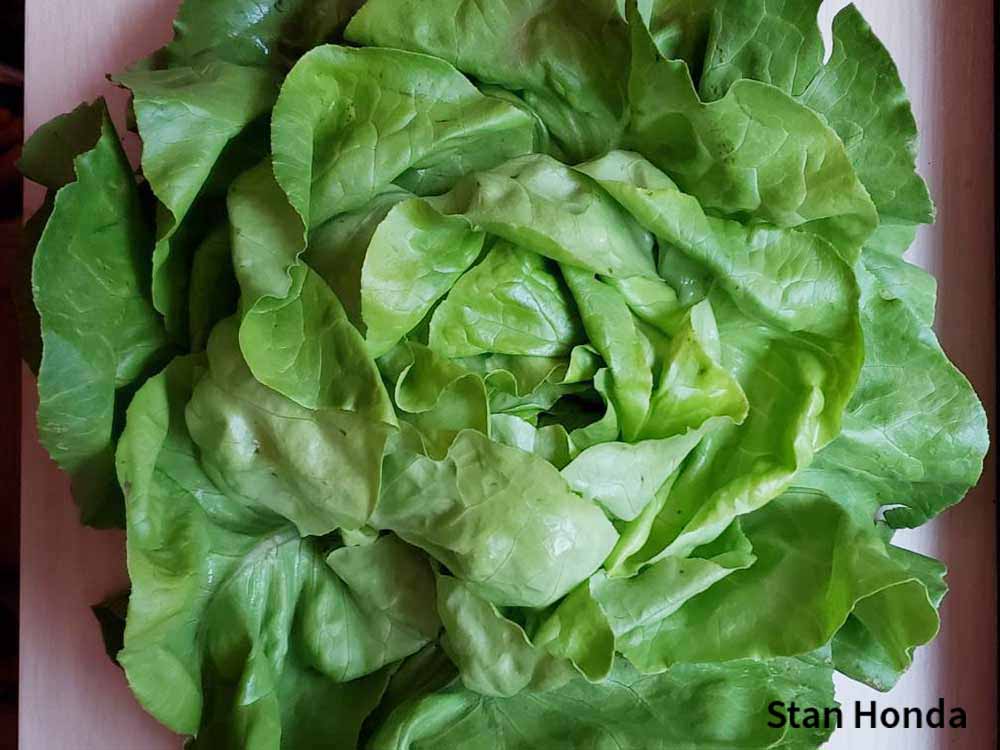
Butterhead Lettuce – Green
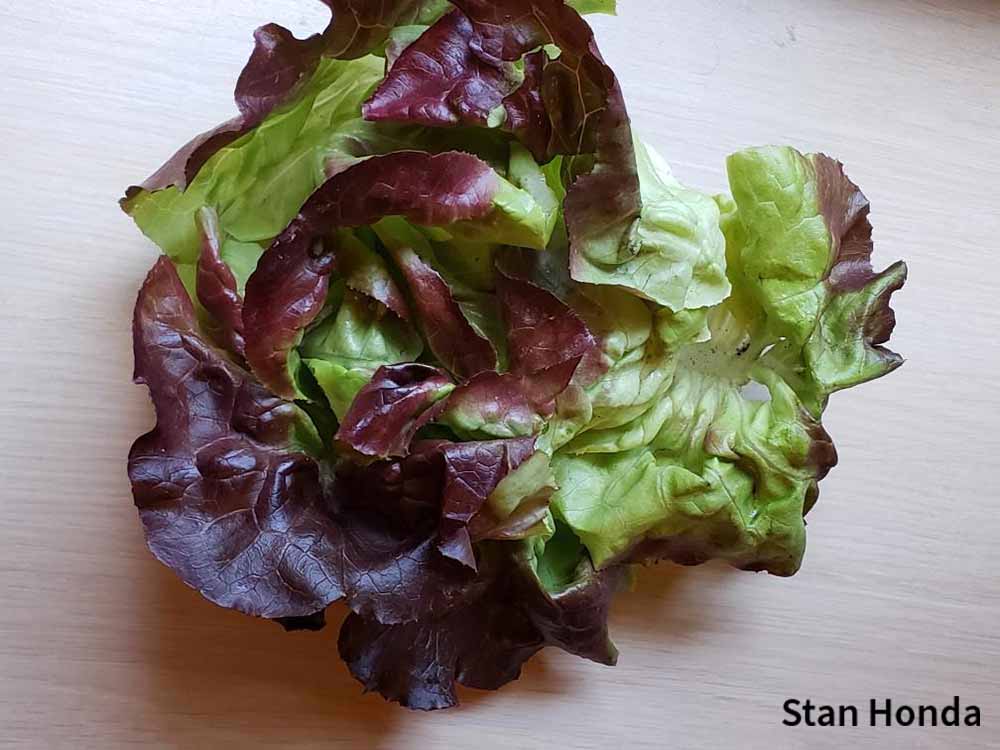
Butterhead Lettuce – Red
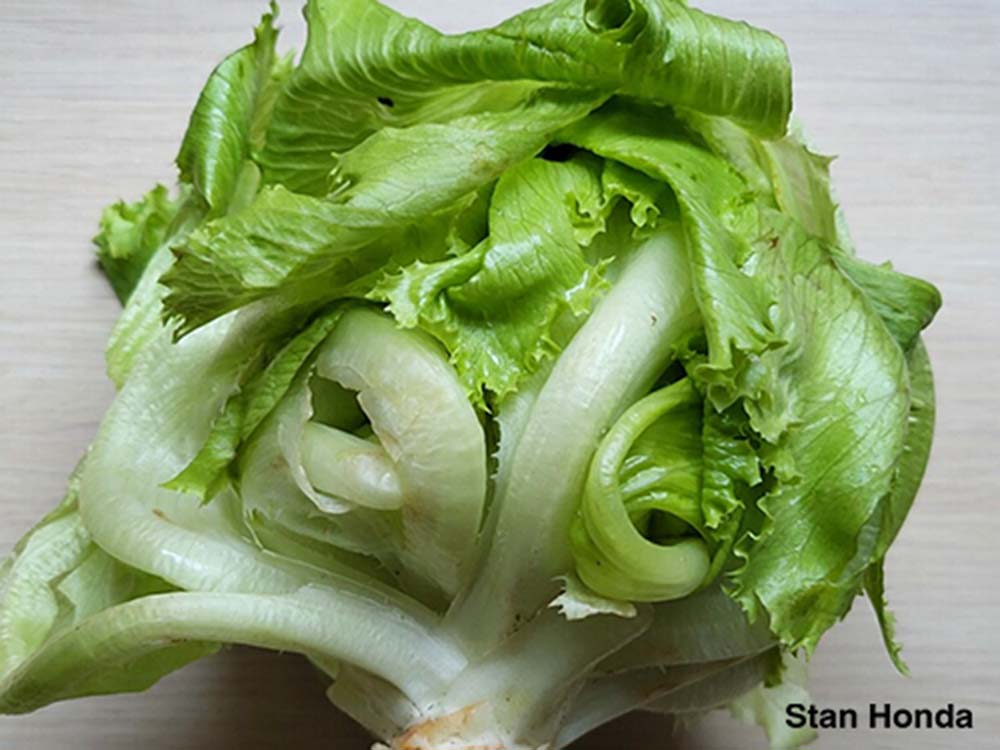
Iceberg Lettuce
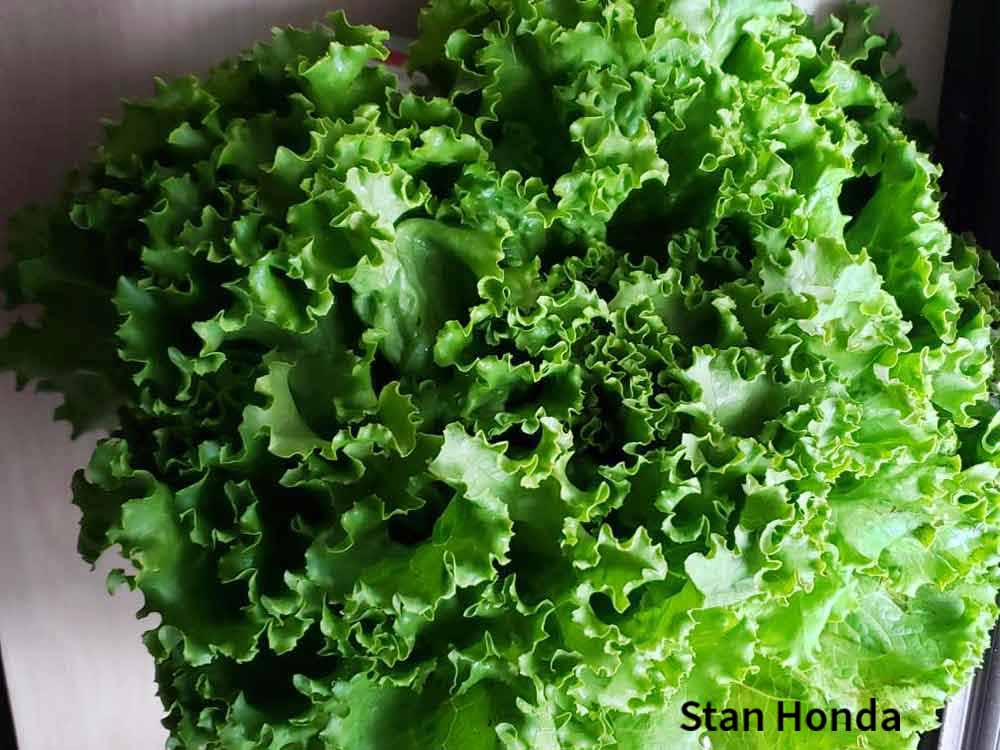
Muir Lettuce



Oak Leaf Lettuce – Green
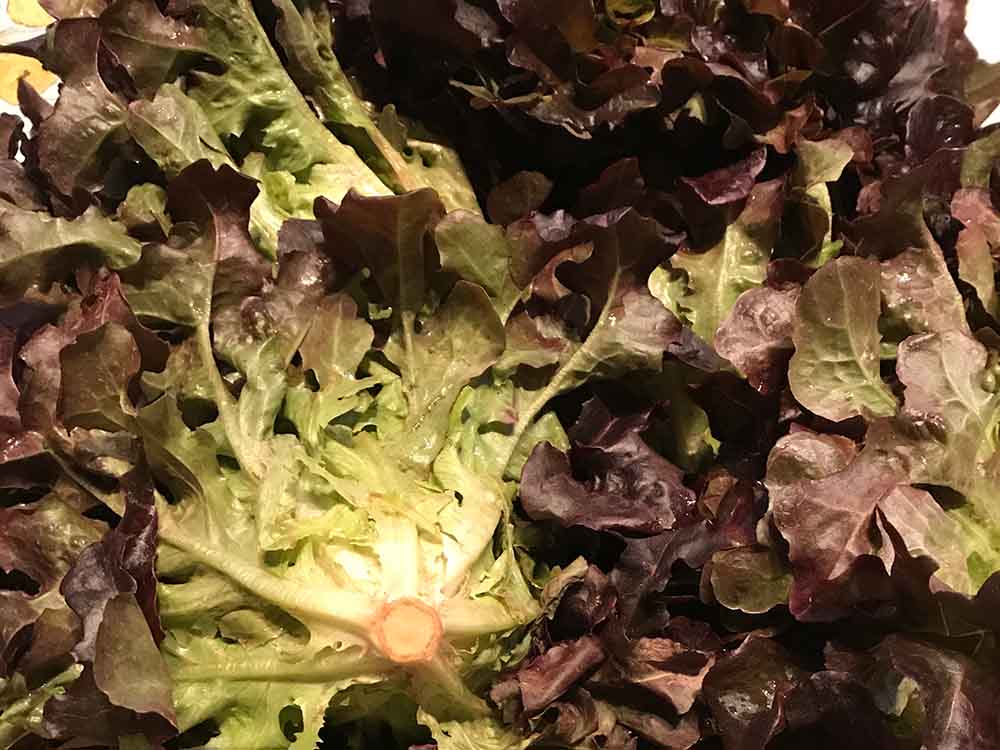

Oak Leaf Lettuce – Red
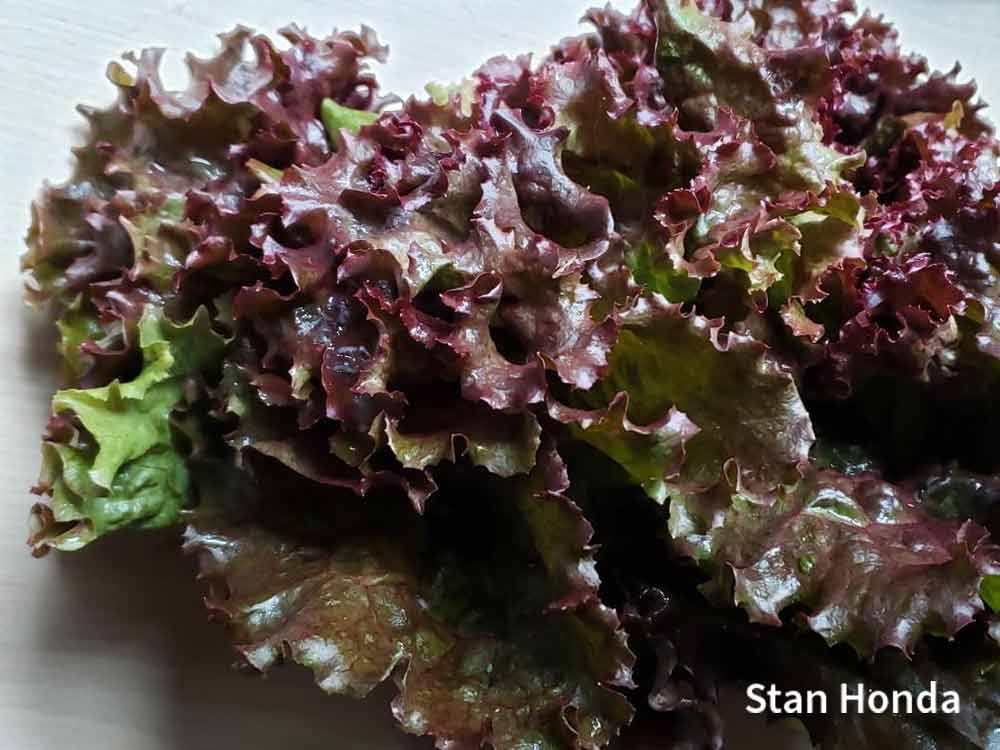

Red Fire Lettuce
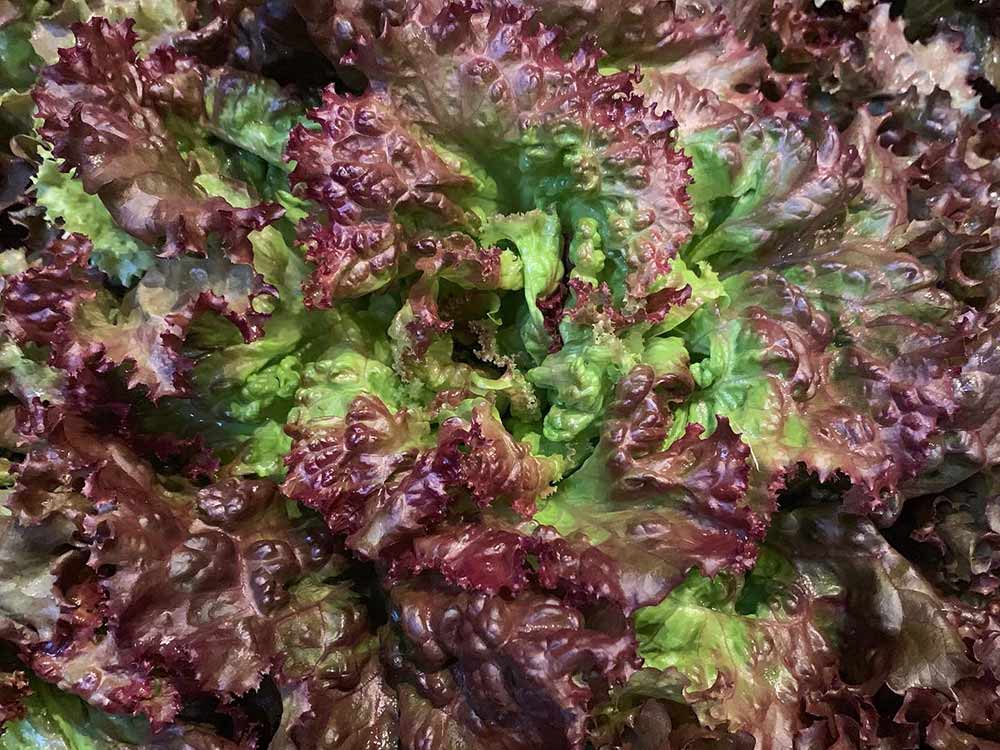

Red Sails Lettuce
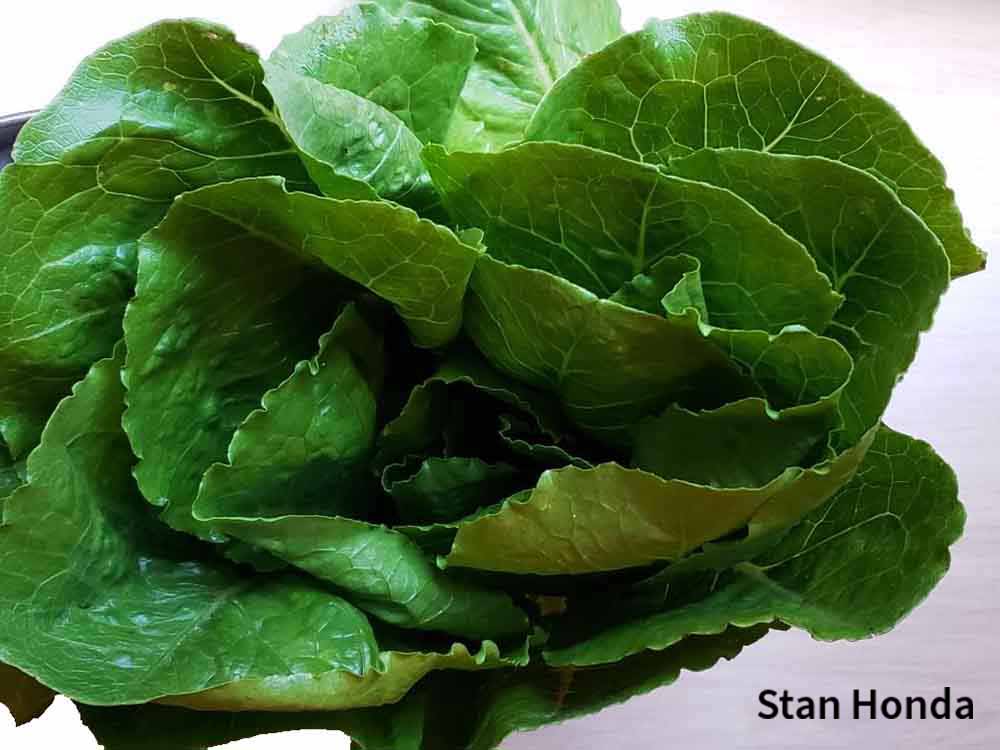

Romaine Lettuce
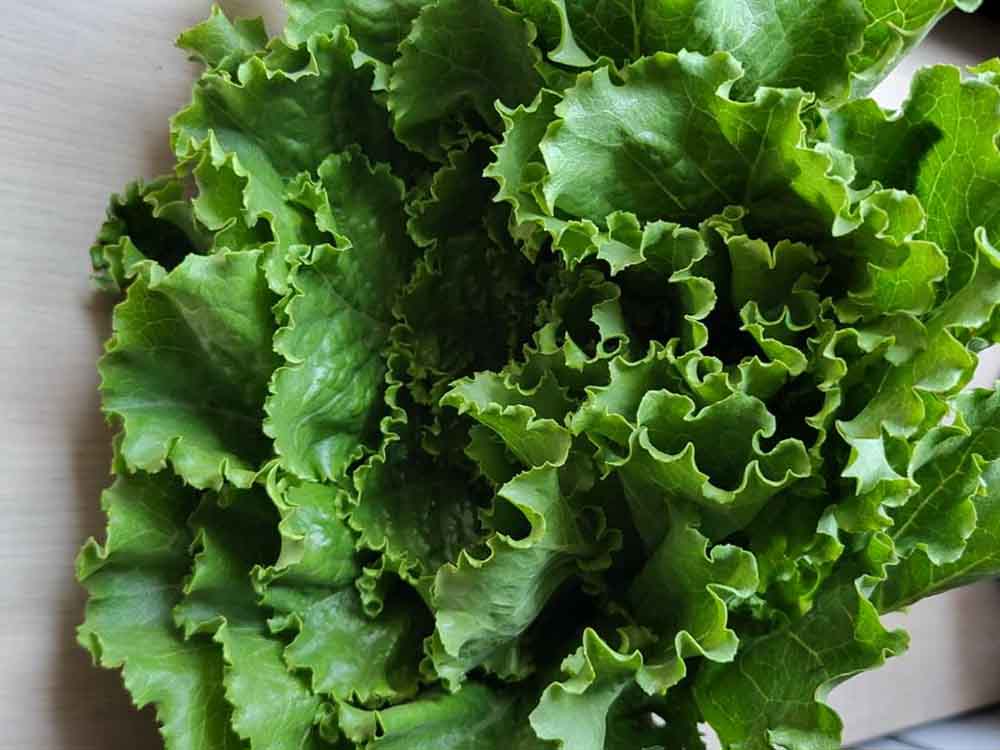

Summer Crisp Lettuce
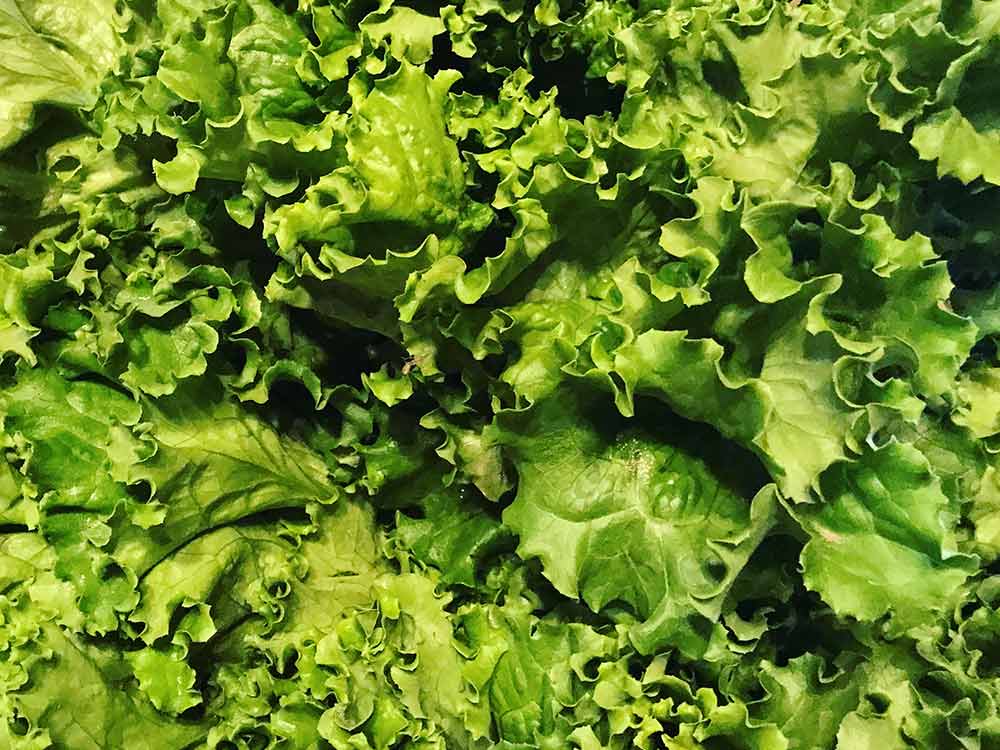

Tropicana Lettuce


Arugula


Frisée
Storing: Keep lettuce in a reasonably cool, humid environment—a plastic bag with holes in it in the crisper drawer of the refrigerator. To keep lettuce fresh longest, don’t cut off the stem or wash it until you’re ready to use it. Keep it away from the colder spots in the fridge—if lettuce freezes, it will never recover. Excess moisture causes rot, so place a paper towel in the plastic bag. Check your lettuce every day or so and remove any leaves that have started to brown and replace the paper towel if it’s wet. Most lettuces will last for a week or more if stored this way.
Restoring: Most of us plan to take care of our lettuce lovingly, but there are times when we shove it in the fridge and forget about it. And then it looks so pathetic that we just want to throw it away. But lettuce can be revived: Cut off the stem, remove brown leaves, and tear the rest into bite-sized pieces. Fill a big bowl with very cold water and add the lettuce; let it soak in the fridge for ~ ½ hour, then drain, dry, and return to the fridge. No one will know.
Avoiding waste: You don’t have to throw away leftover salad, even if it is dressed—if you cover and refrigerate it, it will last 1-2 days. Although the salad quickly loses its crispness, some people like it that way—it becomes salade fatiguée, or wilted salad, popular in France and Italy.
If a wilted salad is not appealing, you can turn it into a gazpacho-like soup or slaw-like spread. Just transfer it to a food processor and pulse for a few seconds, then adjust seasonings.
Preserving: Most methods of preserving vegetables don’t work for lettuce. The only one we have found successful is to make lettuce soup and freeze it—a wonderful way to use up all the lettuce in your fridge and save a little spring for winter. If you have found other methods that work, please send them in. [link underlined to Chilled Lettuce Soup recipe]
Over the course of the CSA season, we receive about a dozen varieties of salad greens. Early weeks delight with leaf and butterhead lettuces. They’re similar, but the butterheads are usually smaller and have tighter heads. We also get romaine, which has elongated leaves that are perfect to stuff and eat as finger foods.
Many of the most beautiful and tasty varieties are also the most fragile; they fall apart when they’re washed and do not last very long after they’re picked. That’s why our farmers also include tropicana lettuce in our mix—it’s a workhorse that keeps its shape without losing leaves and will keep for over two weeks.
Arugula is another spring green that is usually eaten raw. It has a much spicier taste than lettuce, making it a wonderful complement that does well in a mixed green salad.
We receive frisée, also known as curly endive, in the spring and sometimes in the fall. A type of chicory, it has a stronger, more bitter taste than lettuce and a curly leaf; it adds great texture and deeper taste to a salad, and is often cooked (you can see some suggestions on our cooking greens page).
Washing lettuce: Wash lettuce thoroughly right before using it. Although the farm crew gives our lettuces a good rinse, they grow close to the ground and tend to hold a lot of soil inside. Cut off the stem and put any brown leaves into the compost. Separate remaining leaves and soak in a bowl of water, swirling to loosen any dirt. Remove lettuce from the water, leaving the dirt in the bowl. Repeat as needed.
If you don’t have a salad spinner, you might consider buying one. Or you can loosely wrap the cleaned leaves with a dry cloth and let it sit in the fridge while you prepare the dressing; it will be crisp and dry when you want it.
To cut or to tear? The consensus is that tearing lettuce is better than cutting—tearing by hand doesn’t damage the cellular structure the way that a sharp knife can, so the leaves retain moisture and stay crisp longer. It’s also a great way to introduce children to food preparation.
On the other hand, cutting is much faster and results in more uniform pieces, so if you’re going to use the lettuce right away and time is tight, cutting is a fine option. A group of chefs who assumed that cutting was verboten tested this and it turns out that it doesn’t make a big difference.
If you’re making chiffonade—a batch of fine, long strips to scatter over dishes like chili or soup—stack lettuce leaves about 10-12 high and if the leaves allow it, roll them up like a cigar. Using a sharp knife, cut the lettuce into thin strips.
Tossing Lettuce: It’s worth your while to take an extra minute to toss the salad and dressing so that all the leaves are coated. Some cooks prefer not to overdo it so that the lettuce remains crisp. At the other end of the scale, some French chefs prefer to toss vigorously and for a long time until the leaves break and become soft; this would be called salade fatiguée, or tired salad.
- Supply a reasonable amount of protein. We have not consulted nutritionists, but the Food and Drug Administration recommends a daily intake of 50 grams protein* spread over three to five meals. For a main dish salad, we like to aim for 10-15 g protein. Three cups of torn lettuce supply about 1 g protein, so we generally try to add ~ 9-14 g more unless we add other protein-rich foods to the meal. The amounts of protein listed below are rough averages based on the USDA database.
- Taste good. The lettuces we get in our CSA shares are tastier than average—but we probably want more flavor and texture to make us feel satisfied.
- Fill us up. A bowl of lettuce won’t keep us going until the next meal; we need to add something more filling.
Here are some of possible additions to 3 cups of chopped or torn leaves—lettuce, arugula, frisée, greens such as mizuna or mustard greens, spinach, radicchio, or herbs.
Beans and peas: lots of protein—average is about 8 g per half cup. One salad favorite is the chickpea. Soybeans contain the most protein, 14 g per half cup. Agata & Valentina sells roasted soybeans that are crunchy and delicious.
Nuts and seeds: again, protein-packed. Almonds contain 7 g of protein in one-quarter cup. Toasting them enhances their flavor: Apply a light coat of neutral oil to a frying pan, heat for a minute over low heat, then spread the nuts in a single layer. Heat for 1-2 minutes, stirring or tossing frequently, until the nuts become fragrant and color slightly. Be careful, they burn quickly after they are ready. Remove from heat—they will deepen in color after they are off the flame. A honey or maple syrup coating is also delicious.
Cheese: crumbled feta or goat cheese, shaved parmesan or jack, chunks of cheddar, shredded mozzarella, crumbled blue—or any of the many interesting and yummy cheeses available through Lewis Waite Farm or in local stores. Cheeses average 7 g protein per ounce.
Tofu: absorbs salad dressings and has lots of protein. Firm and extra-firm tofu can be cut into cubes and baked or grilled. Soft tofu can be mixed into dressings. A 3 oz portion of tofu contains ~7 g protein.
Animal protein: just an ounce or two of grilled, roasted, or any other preparation of meat, poultry, or fish. Flaked salmon and grilled chicken are two of the easiest additions. Leftover cold cuts—smoked turkey, roast beef, and ham, for example—require little work and use food that might otherwise go to waste. Leftover barbecued chicken or sausage add strong flavor as well as protein. Hardboiled eggs are also good.
Grains: a half-cup of complex carbs can make the difference between hunger and satisfaction. Rice, quinoa, couscous, pasta, and ancient grains like faro, wheatberries, barley, spelt (take a look at Lewis Waite’s grain selection)—are tasty and filling additions.
Other vegetables and fruits: tomatoes, of course, though they usually don’t appear in our shares the same weeks as lettuce. Any raw or cooked vegetables go a long way in making a salad a main dish. Fruits—dried, cooked, or fresh—are also nice.
Salty things: olives, capers, pickles, anchovies, and sardines add unique flavors.
Dressings: add interesting flavors, and if they’re full of dairy (buttermilk, blue cheese) or seed- or nut-based ingredients (such as tahini or peanut butter), they also contribute significant protein. We have some great dressing recipes on this page.
*The Daily Value (DV) of protein for adults and children over 4 years old is 50 grams, based on a 2,000 calorie daily diet. Individuals’ DV may be higher or lower depending on your calorie needs.
RECIPES
SALAD DRESSINGS
SALADS
- Simple Caesar salad
- Caesar salad with creamy yogurt dressing
- Wilted lettuce salad
- Lettuce and mango salad
- Chopped salad with tuna
- Chef salad
- Cheddar-apple-arugula salad
- Panzanella salad with bacon and arugula
- Bibb lettuce with blueberries and honey lemon dressing
- Quinoa and frisée salad with Szechwan-spiced beets, spiced almond-citrus crumb, and green goddess dressing
- Frisée salad with caramelized onions, apples, and feta cheese with garlic scape pesto
- Rhubarb, radish, and green onion salad with lemon-honey dressing
- Farro salad with arugula, radishes, & goat cheese
MISC
These salad greens are low in calories and comprised mostly of water—still, they add nutritious vitamins and minerals to our diet.
Lettuce is an excellent source of vitamins A and K. A 100 g serving contains nearly half of the recommended DV of Vitamin A and full DV of Vitamin K. Lettuce also provides folate. Nutrient levels differ amongst varieties—e.g., green leaf varieties also contain Vitamin C and manganese; red leaf varieties are the richest in Vitamin K. Importantly, lettuce is a low calorie, low carb, water-rich, nutrient-dense green that lends itself to building a meal with a great variety of tastes and textures.
Arugula is rich in Vitamin K and folate, and contains Vitamins A and C, manganese, magnesium, and calcium.
Frisée is an excellent source of Vitamin K (nearly twice the recommended DV in 100 g serving!) and folate, and a good source of Vitamin A, Vitamin B5, manganese, copper, and dietary fiber.
Chlorophyll—which plants combine with sunshine to turn carbon dioxide into the oxygen that we breathe—has many pigments in it. Most are green, but there are also yellow, orange, blue, and purple pigments. Different plants have different combinations of these pigments, and botanists collect and hybridize varieties with the colors they like so that plants display the most pleasing colors—pink, burgundy, bronze, purple, and every shade of green. There are no blue lettuces yet, but maybe there will be someday.
Lettuce needs cool weather and a lot of water to grow well. That’s why we get great lettuce harvests in cool, wet springs when many other vegetables don’t thrive. When the weather gets too hot, the lettuce thinks it’s time to produce seeds for the next season. The plant bolts, sending up tall yellow flowers that have seeds in them. Then the leaves become bitter and the plant dies. Stoneledge does a second planting of lettuce for the fall season, when the temperatures cool off a bit.
Lettuce is usually grown in long row; the heads stay close to the ground and the plants have long taproots that suck up moisture from the ground. To harvest, our farmers cut the head from the root with a sharp knife. Home gardeners often “cut and come again”—they cut a few leaves from the outer edges, after which those leaves grow back. But farmers working on a larger scale usually take the whole head.
Arugula does not grow in heads; the farmers pick bunches of leaves and band them together.
Why does lettuce wilt? Water moves through lettuce through veins called xylem tubes. When these tubes are full of water, the leaves are perky and stand up straight. If the water evaporates because of heat or sunshine, the lettuce gets droopy. When lettuce is in the ground, it sucks up water from the soil through its stem; when the lettuce is harvested, it no longer has access to groundwater.
Try this kid-friendly experiment: You can re-grow lettuce leaves at home. Just save the stem next time you cut off the leaves (about 1 inch from the bottom) and place it in a shallow bowl of water. Put the bowl on your windowsill. Change the water every 1-2 days. Within a few days you should see small leaves begin to form at the top of the stem, and in about two weeks you could have as much as a half-head. Since water has no nutrients, the re-grown lettuce won’t get much bigger than that, but it’s still a fun project!
Humans have been eating lettuce for five millennia; there is pictorial evidence that weedy lettuce plants have been selected and improved by ancient Egyptians since 2680 BCE. The plant was sacred to Min, a reproduction god, who thought it helped him “perform the sexual act untiringly” (some people still believe that lettuce has aphrodisiac properties). Ancient lettuce probably resembled what we now call romaine and grew about 30 inches tall. It was passed from the Egyptians to the Greeks and Romans and then throughout Europe; colonists brought it to the Americas. It didn’t change much until modern times when thousands of new varieties appeared.
The word lettuce (lactuca in Latin) means “milk”—it was named for the milky substance that you see when you break its stem. Lettuce is a member of the Asteraceae family, which includes daisies, sunflowers, artichokes, and ragweed.
CONTRIBUTOR



